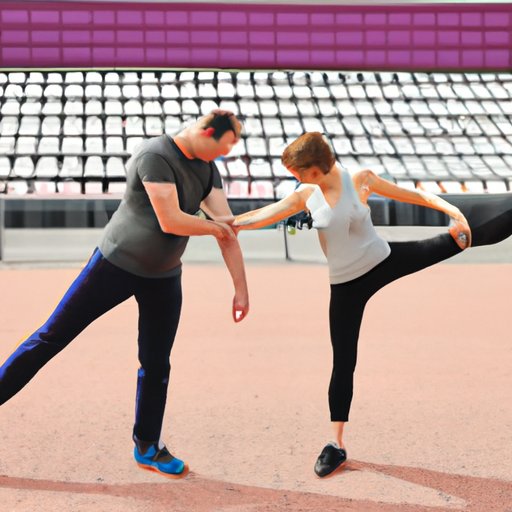Introduction
How often have you been told to stretch before exercising or after sitting for hours on a long flight? It’s not uncommon to hear others suggesting stretching, but many of us question why we should do it. In this article, we will explore the physical and mental benefits of stretching, from increased flexibility to reduced stress levels. By the end of it, we hope to convince you that stretching should be incorporated into your daily routine.
The Science Behind Stretching
Stretching is a natural and instinctive movement that occurs when we feel the need to relieve muscle tension in our body. And when we stretch, we stimulate chemical and mechanical changes in our muscles that can help them to become more flexible and resilient over time. Research shows that stretching can improve blood circulation, reduce muscle stiffness and soreness, and decrease the risk of injury.
Those who incorporate stretching into their regular routine may also experience better range of motion, improved posture, and greater relaxation. Studies have shown that stretching can be particularly beneficial for people who suffer from chronic conditions that affect their muscles and joints, such as arthritis or fibromyalgia.
Stretching for Health and Wellness
The benefits of stretching are not limited to physical health. Stretching can also be beneficial for our mental and emotional health. By stretching, we reduce stress and tension in our body, which can in turn reduce stress and anxiety in our minds. Studies have shown that regular stretching can lead to increased feelings of relaxation, improved mood, and reduced symptoms of depression.
Stretching can also help improve posture, which can lead to fewer aches and pains throughout the day. For those who sit behind a desk or computer all day, stretching can be particularly beneficial in reducing back, neck, and shoulder pain.
To incorporate stretching into your daily routine, consider taking regular breaks to stretch during work or trying a stretching routine before bed. Yoga or Pilates classes can also be a great way to get started.
The Importance of Stretching for Athletes and Active Individuals
Stretching is particularly important for those who engage in physical activity or sports. Before exercise, stretching can improve circulation, increase flexibility, and prepare muscles for the upcoming activity.
Stretching can also prevent injuries and improve performance by reducing muscle tension and increasing joint mobility. By elongating muscles through stretching, they become more resistent to tears and injury during strenuous activity.
Each type of exercise requires a specific type of stretching. For example, runners should incorporate dynamic stretching to warm up because it engages multiple muscle groups at once. Common examples include high-knees, lunges, and leg swings. Consult a trainer or research on best stretches for your preferred exercise routine.
From Desk Jockeys to Crossfitters: How Stretching Can Benefit People of All Lifestyles
Regardless of your activity level, stretching can provide numerous benefits. For those who lead sedentary lifestyles and sit for prolonged periods of time, stretching can counteract the negative effects of sitting such as poor posture, tense muscles and stiff joints. Stretching improves blood flow, helps keep joints lubricated and helps maintain joint mobility, which can reduce the risk of developing chronic pain, as well as help alleviate pain you may already have.
Stretching As Self-Care
Stretching also serves as an essential component of self-care for our mental and emotional health. In addition to reducing stress and anxiety, stretching can help us to feel more calm and centered while increasing our mental clarity and focus. By taking a few minutes each day to stretch and breathe deeply, we can enjoy a greater sense of well-being and balance in our lives.
Consider incorporating stretching into your self-care routine by starting or ending your day with some calming stretches or breathing exercises. If you find it difficult to carve out time for self-care in your schedule, set parameters to make stretching part of your routine. Wake up a few minutes earlier to do a few quick stretches, or do after dinner or bedtime stretches with your partner or friends.
Conclusion
In conclusion, stretching should be viewed as a necessary and beneficial component of our daily routine. The physical benefits, including increased flexibility, improved circulation, and reduced muscle tension, along with the mental and emotional benefits such as reduced anxiety and stress, make it essential for optimal health and well-being. So, take care of your mind, body, and soul by making stretching a part of your daily routine.
